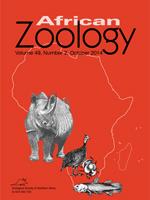The cushion sea star Parvalustra exigua from five sites along the shore of False Bay on the southern coast of South Africa was studied using two cellular biomarkers, the neutral red retention assay (NRR) and the lysosomal destabilization assay (DI) to assess damage in the coelomocytes in response to metals. This was compared to pollution levels using a pollution load index (PLI) calculated for metals present. Laboratory exposures to cadmium were done to verify biomarker responses. The PLIs for the sites correlated with the levels of anthropogenic activities and effluent inflow. The highest pollution was at Muizenberg, with human habitation on the shore level, a fishing harbour and informal settlements. These specimens had shorter NRR times, indicating more damage than those from sites with lower pollution. The DI results also correlated with pollution levels. This study provided evidence that P. exigua has potential for monitoring environmental pollution, using biomarkers, especially in southern coastal areas due to its distribution.
BioOne.org will be down briefly for maintenance on 12 February 2025 between 18:00-21:00 Pacific Time US. We apologize for any inconvenience.
How to translate text using browser tools
1 October 2014
Cellular Responses of the Starfish Parvalustra exigua to Metal Pollution in False Bay, South Africa
Sophié A. Reinecke,
Adriaan J. Reinecke
ACCESS THE FULL ARTICLE

African Zoology
Vol. 49 • No. 2
October 2014
Vol. 49 • No. 2
October 2014
biomarkers
lysosomal destabilization assay
neutral red retention assay
Parvalustra exigua, heavy metals
pollution load index




